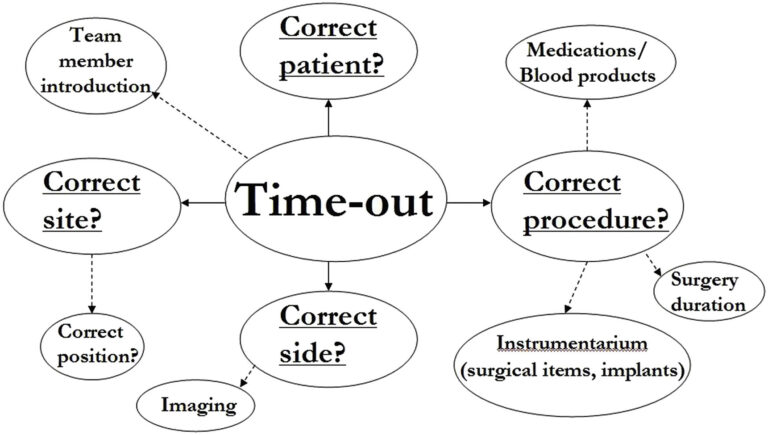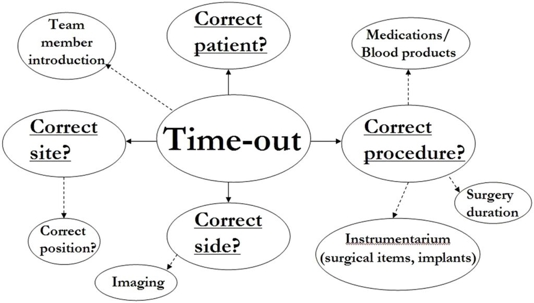National “Time-Out “ Day was on June 11 this year, marking an important reminder of one of the most effective tools medical providers in an operating room can use to prevent medical malpractice. A time-out is the simplest of tools – it is a short pause right before the start of surgery to confirm three crucial facts:
- That they are operating on the right patient;
- That they are operating on the correct body part; and
- That they are about to perform the correct procedure.
Any member of the surgical team can call for a time-out, but it is typically the responsibility of the circulating nurse or the surgeon. Expanded time-outs can include surgical team member introductions, a brief overview of the planned procedure, and a review of any relevant imaging.

Illustration from Commentary on: Dawka, Sushil, “The WHO Safer Surgery Checklist Time Out Procedure Revisited: Strategies to Optimise Compliance and Safety,” International Journal of Surgery, Vol. 68, Aug. 2019.
Although time-outs have been proven to increase patient safety without incurring additional costs, compliance remains an issue. Unsurprisingly, a skipped or poorly done time-out is almost always behind what medical providers call a “never event,” something that should never happen.
At Berman & Simmons, we have litigated multiple medical malpractice cases – including wrong-site surgeries – that we have traced back to non-existent or poorly performed time-outs. Typically, a time-out should be documented in the operative medical record. During the discovery process, we identify all of the providers who were in the operating room during the surgery. We then take their depositions during which they are questioned under oath about what happened during the surgery, including whether a time-out was performed and who participated. Failing to identify the correct patient, correct body part/side, and the correct procedure is evidence of negligence, one of the elements we must prove to bring a medical malpractice claim.
